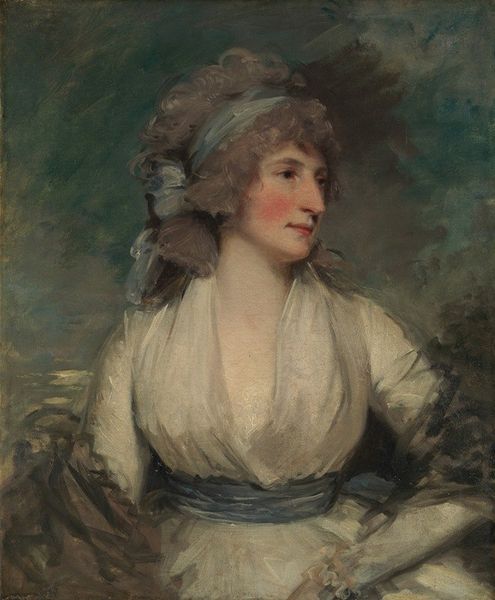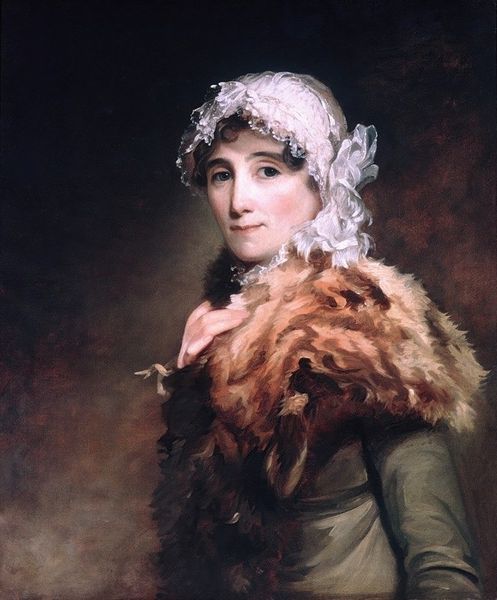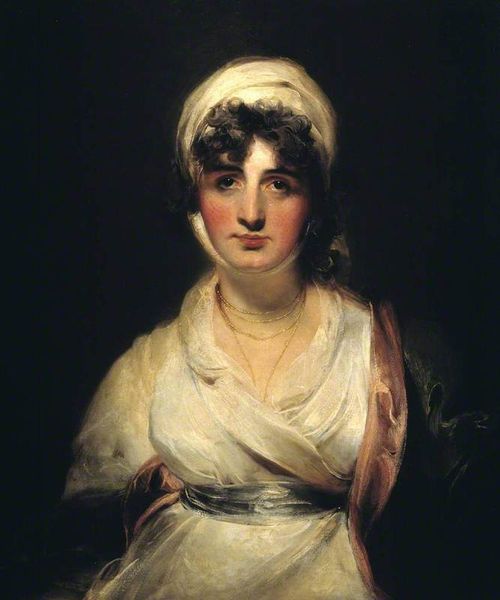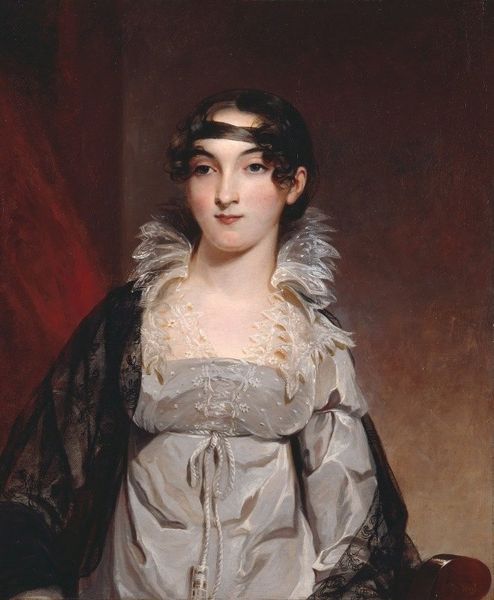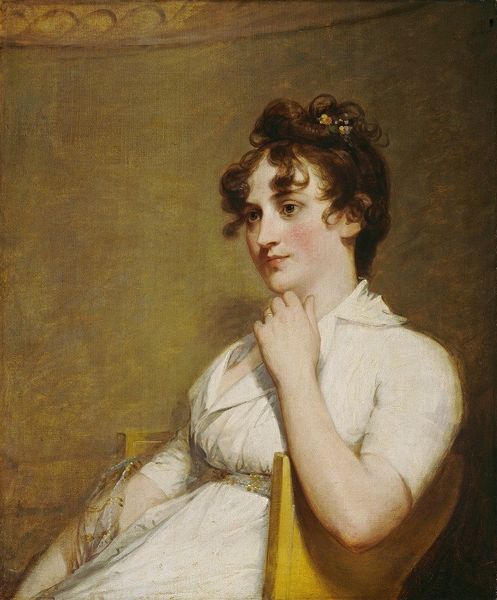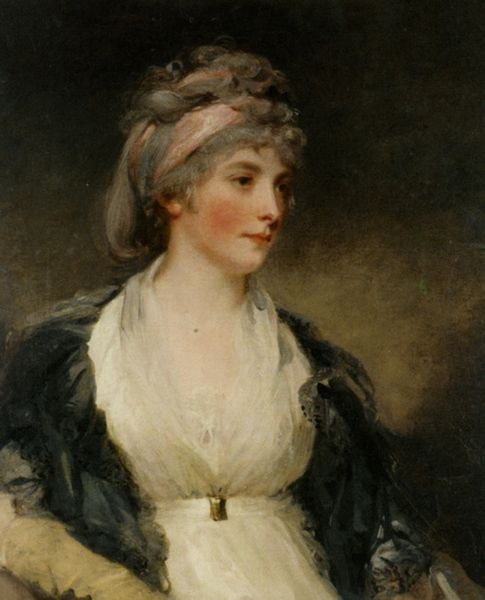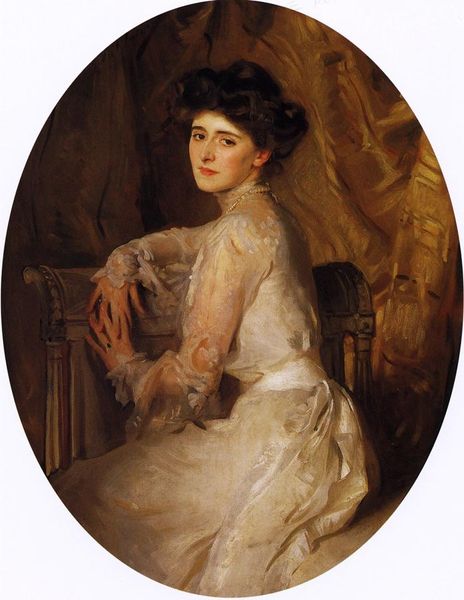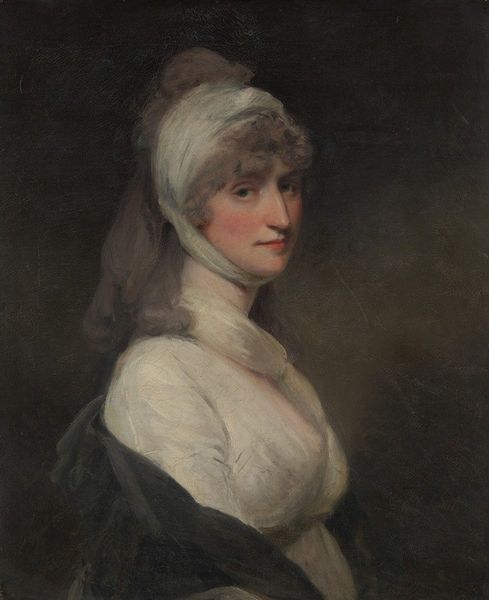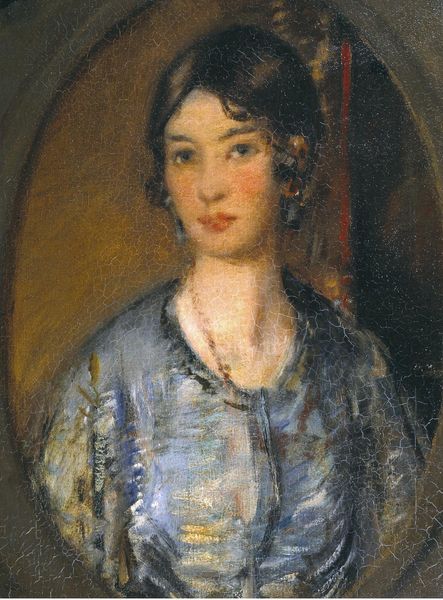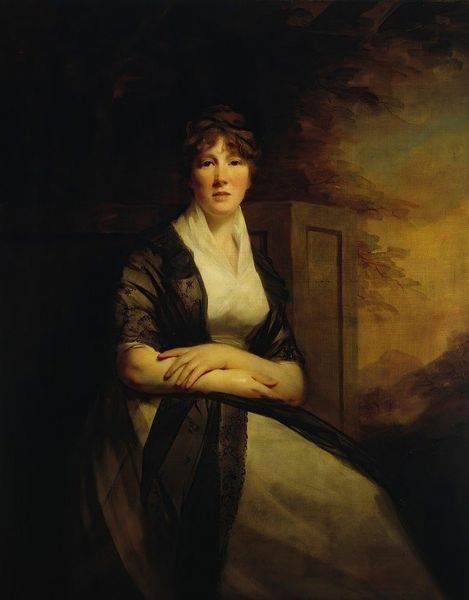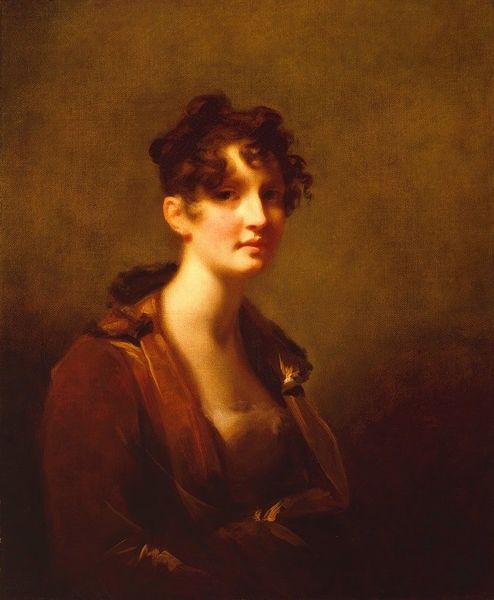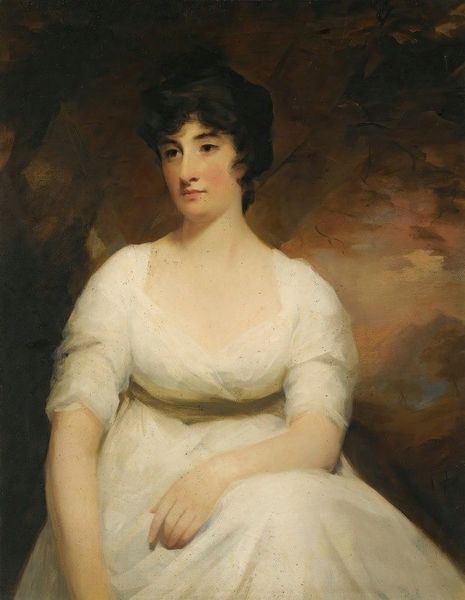
painting, oil-paint
#
portrait
#
figurative
#
painting
#
oil-paint
#
figuration
#
classicism
#
romanticism
#
scottish-colorists
#
academic-art
Copyright: Public Domain: Artvee
Curator: This is Sir Henry Raeburn’s portrait, "Mrs. Alexander Campbell of Possil," painted sometime between 1756 and 1823. A striking example of Scottish portraiture from the late 18th and early 19th centuries. Editor: She appears lost in thought, almost melancholic. The stark contrast between the dark background and her luminous skin amplifies that introspective mood. It's really quite powerful. Curator: Absolutely. Raeburn masterfully used light and shadow to emphasize her features and convey a sense of elegance. Notice how her attire, the high-waisted dress, and the delicate necklace, speaks volumes about her social standing in that era. It suggests refinement, a certain economic power reflected in her garments. Editor: Yes, but beyond the class signifiers, what about the role of women during this era and how women had a defined "place". The dark backdrop could perhaps symbolize women’s limited agency. A gilded cage of sorts that kept women out of broader society, forcing introspection as one of few outlets. It asks who decided whose portraits hung, whose narratives were given space, and where did they hang. Were women like Mrs. Alexander Campbell displayed purely as reflections of male success and legacies, or as individuals deserving of recognition in their own right? Curator: That's an interesting angle. Considering the portrait's intended audience is crucial; usually her family. In that context, the painting is most likely intended to showcase the family’s prominence and good taste. Remember, Raeburn was highly sought after by the Scottish elite of his time. Editor: True, his popularity points to the pervasive patriarchal nature of commissioning such artwork. Still, art offers itself as a point of contention. Are women subjects or are women meant as objects? If we are engaging with this history it should not simply as a celebration but through a lens that demands social reflection of its creation and dissemination. Curator: Of course, looking at the portraits through a lens of feminist theory broadens our understanding of how these images perpetuate or question power structures. I feel we could reflect and appreciate the skill and societal norms of a portrait in context without negating our own lens. Editor: I agree. It’s precisely this dialogue between art historical context and contemporary perspective that makes viewing this piece such a stimulating encounter.
Comments
No comments
Be the first to comment and join the conversation on the ultimate creative platform.
